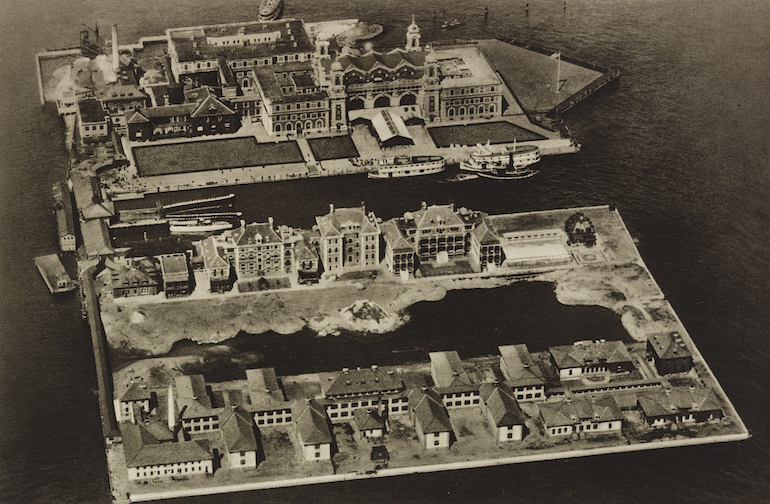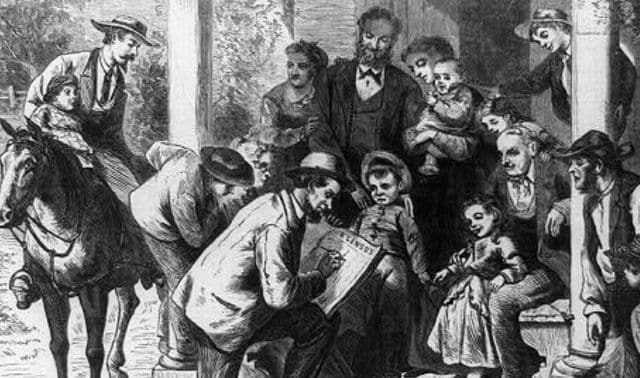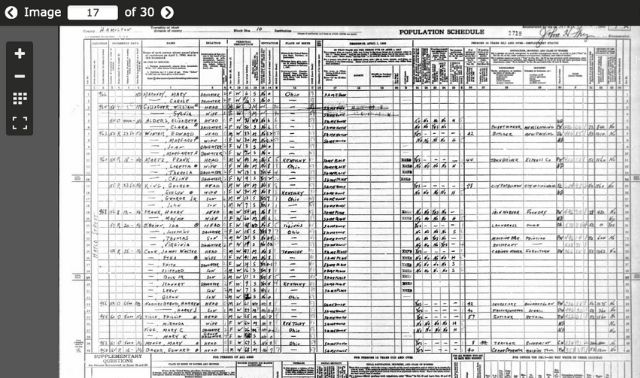Sign up for the Family Tree Newsletter! Plus, you’ll receive our 10 Essential Genealogy Research Forms PDF as a special thank you.
Get Your Free Genealogy Forms
"*" indicates required fields
1897: The Ellis Island Fire
The immigration station at Ellis Island was only five years old when it burned to the ground on a summer night in 1897. Remarkably for a facility designed to accommodate up to 10,000 visitors per day—and some overnight—no one was killed. But millions of records were lost.
The story of the “first” Ellis Island is also a story about the federal government assuming control of immigrant processing, which was previously left to individual states. Castle Garden, on the tip of Lower Manhattan, had opened in 1855 as New York’s official immigrant station. But by 1890, it was clear the facility (and its operators) weren’t properly managing the increasing immigrant traffic.

In April of 1890, the federal government began processing New York arrivals; it would soon do so nationwide. The Barge Office, also in Lower Manhattan, served as a temporary immigration
station while contractors enlarged the land mass of nearby Ellis Island.
A brand new building
The new half-million dollar facility opened on Ellis Island Jan. 1, 1892. The enormous main building was 400 feet long with distinctive square towers. Its wooden walls and open-ceiling plan gave the place a light, airy atmosphere. Inside, immigrants stored their baggage on the first floor and climbed to the second for questioning and inspection. Successful arrivals could exchange currency and purchase rail tickets to their final destinations. Those who were detained for further inspection stayed in dormitories. Other structures on the island supported a revolving community of detainees: a hospital with staff quarters, a bathhouse, restaurant, laundry, boiler house and electric light plant.
A fast-moving blaze
This magnificent building caught fire around midnight on June 15, 1897. A watchman called an alarm after spotting flames dancing out of a second-floor window. Newspapers reported that employees calmly evacuated more than 200 overnight detainees—including 55 hospital patients—to a ferry boat. Fire boats arrived promptly. But the fast-moving blaze gutted the wood-framed building within an hour, then burned the nearby buildings and docks, too.
Ellis Island remained closed and immigrant processing returned to the Barge Office until Dec. 17, 1900. The new fireproof red brick facility cost three times as much to build as its predecessor. Millions more immigrants passed through its doors. Before it closed in 1954, it also sheltered wounded WWII servicemen, Coast Guard trainees, enemy aliens and deportees.
What was lost?
What records were lost in the fire? Now that you’ve heard the story, the answer will make more sense. Ellis Island passenger arrival lists (1892-1897) went up in flames. So did records created during the federal startup period at the Barge Office. Unfortunately, federal officials also had claimed the State of New York’s Castle Garden passenger arrival lists created between 1855 and 1890. So those are gone, too.
Then what’s in those huge New York passenger databases you can search online? Are they missing early arrivals to Ellis Island and all who passed through Castle Garden? Happily, no. The US Customs Office also collected passenger lists from ship’s captains. These records have been microfilmed and indexed, and now fill the holes burned by the 1897 fire.
Ellis Island Fire Summary
Records lost
Passenger arrival records at Castle Garden (1855-1890), the Barge Office (1890-1891) and Ellis Island (1892-1897)
What survived
None of the records held at Ellis Island up to the date of the fire
Where to look
Search for free at the Ellis Island website, FamilySearch and Ancestry.com.
Substitute records
Customs Office passenger lists (National Archives microfilm publication M237, Passenger Lists of Vessels Arriving at New York, 1820-1897)
Tip: Stephen P. Morse’s third-party search of the Ellis Island website’s passenger records offers flexible search options that may help you home in on your hard-to-find immigrant.




